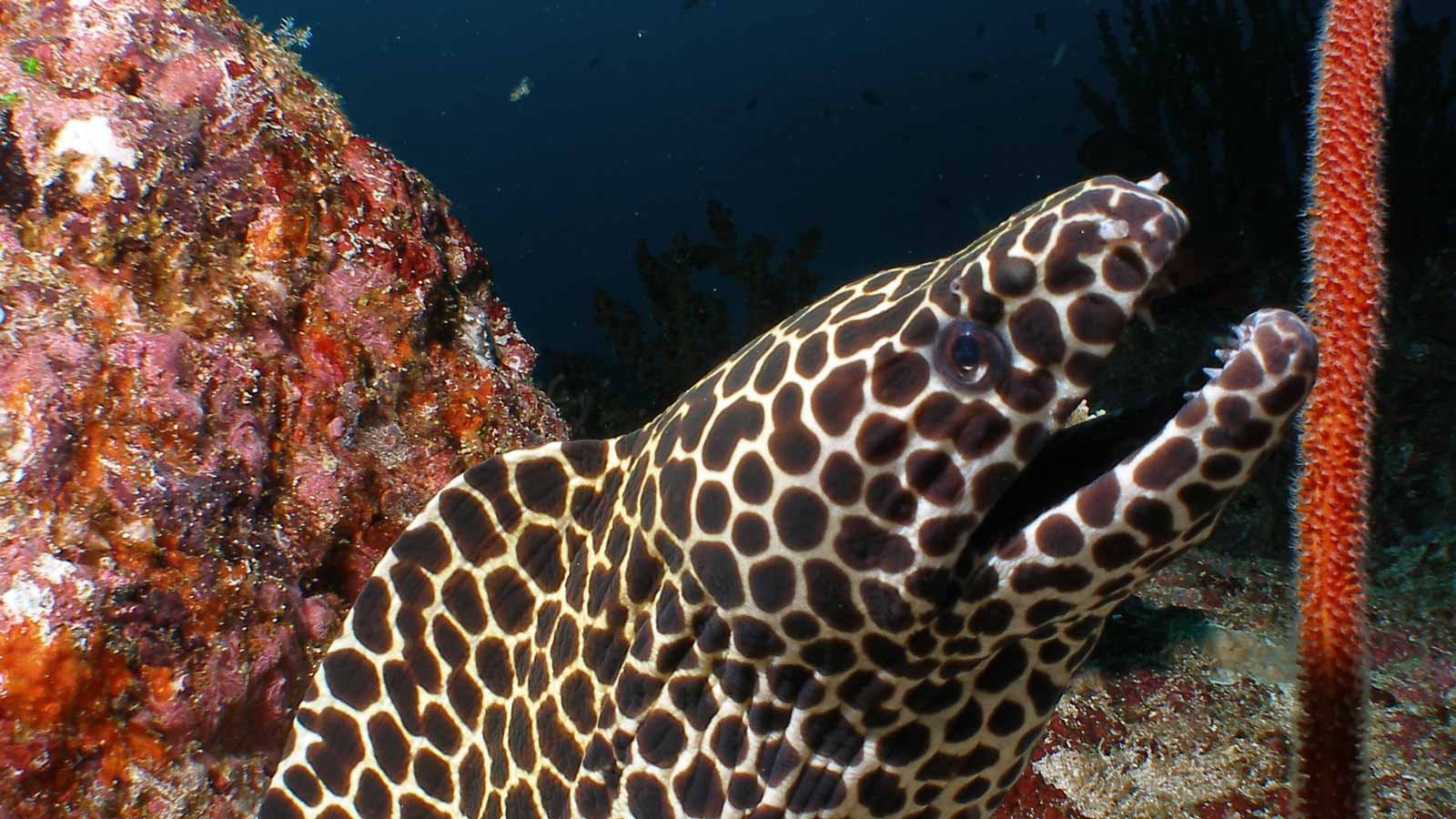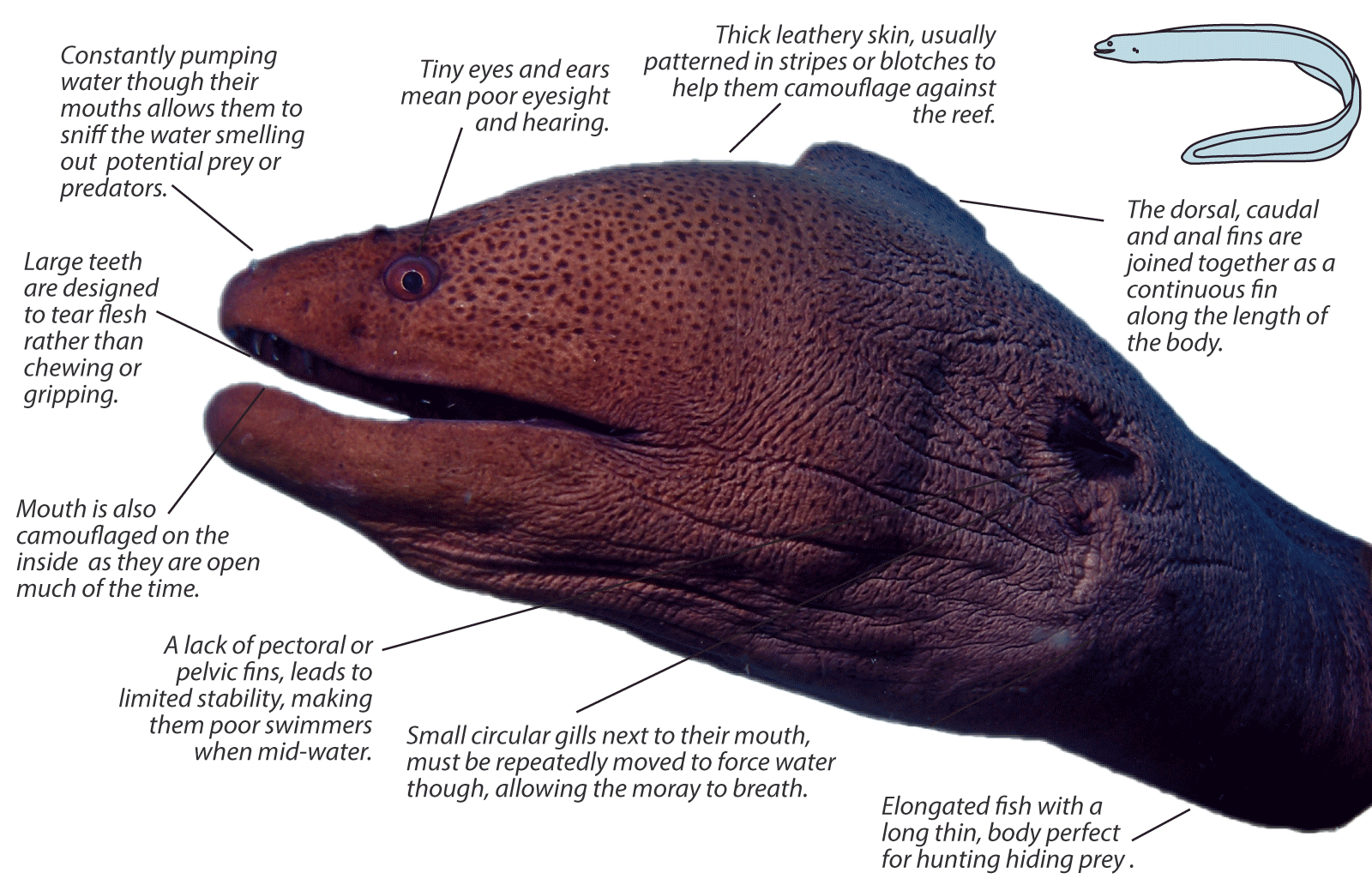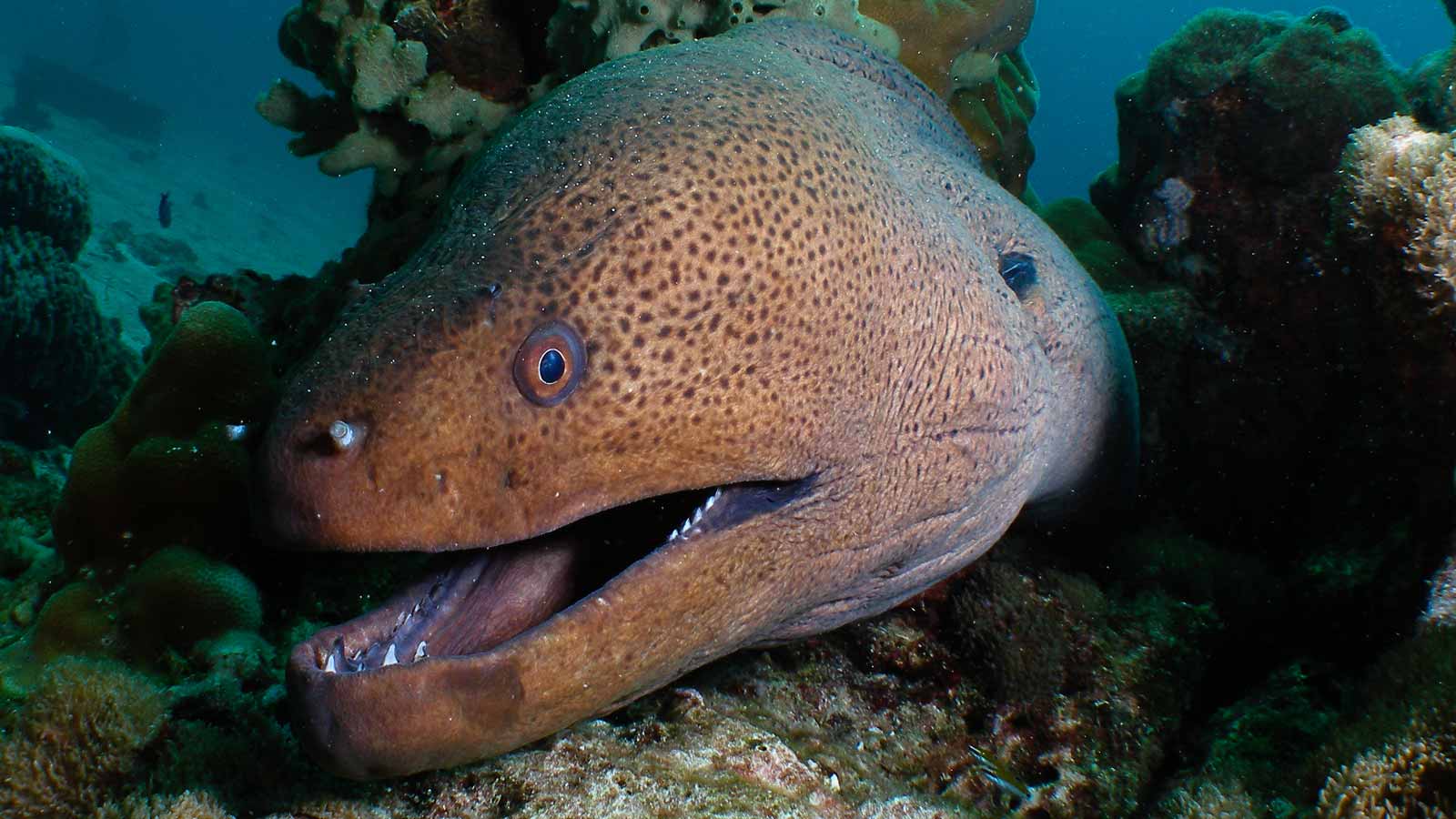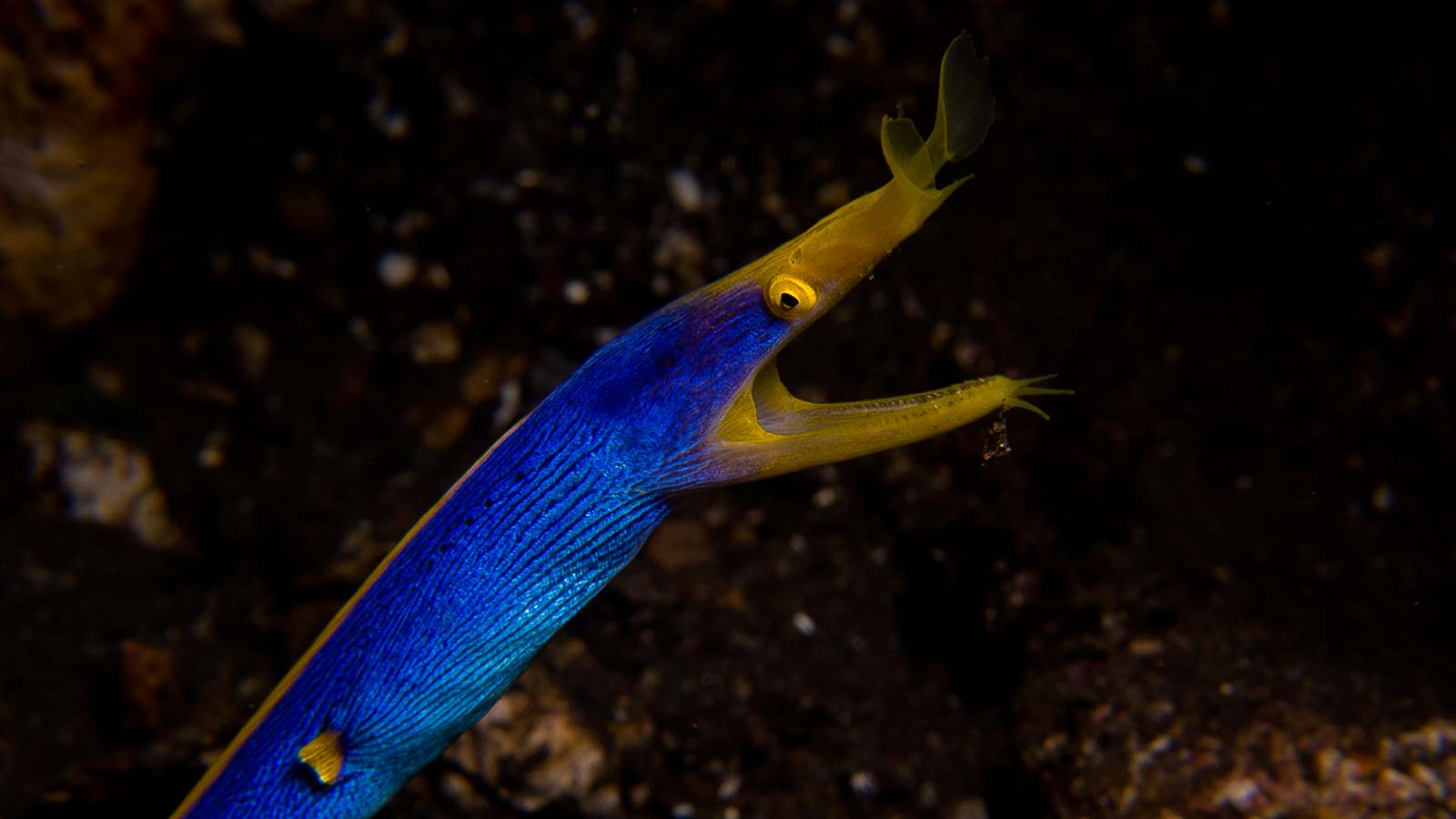

They are territorial fish, spending their days resting in a hole sticking their heads out and rhythmically sucking water through their mouths to keep a flow of water passing their gills. They are usually solitary, although they do sometimes share their home with another moray.
They are the only animal to use these jaws when feeding, grasping struggling prey and forcing it down their throat.
Moray eels are a favourite for divers, especially the more colourful and flamboyant family members. They come in a variety of shapes, sizes and patterns & are often encountered on a dive.
They often hide their long, slender bodies in holes and crevices during the day, allowing only their head to protrude.
Because of the position of their gills they must open and close their mouths repeatedly to allow water to pass and facilitate breathing. This behaviour is often mistaken for aggression, but in reality most morays are shy and quick to retreat into their holes. If they feel threatened however, they are capable of inflicting a nasty bite, but only as a last resort.
Giant Moray
(Gymnothorax javanicus)

Giant Moray (Gymnothorax javanicus)
One of the largest Morays. Identified by its large size and dark brown-red coloration, with a pattern of mottled black spots. It is found throughout Asian Tropical waters and can be locally very common.
Ribbon Eel
(Rhinomuraena quaesita)

One of the most flamboyant and easily recognised Morays. They have very long, flattened, brightly coloured bodies. Juveniles are black with a bright yellow fin, while females are brilliant blue with a yellow fin and males are uniform yellow.
They are very rarely seen outside their holes, usually obverted reaching out of their burrows searching for a meal.
Honeycomb Moray
(Gymnothorax favagineus)

A larger moray with a beautiful black and white honeycomb pattern. Juveniles have a yellow tinge to their heads that fades with age and larger black markings that get smaller as the eel grows.
There are many species of moray eel. Here are some of the most common finds for scuba divers.
SPECIES: 150
SIZE RANGE: 26-300 cm
DISTRIBUTION:
Global. Widespread throughout region.
HABITAT:
Burrows on a sand or mud bottom, along rocky shorelines, or in coral reefs. Moray eels are bottom dwelling fish.
THREATS:
Few.
-
Elongated fish with a long thin, body perfect for hunting hiding prey
-
Thick leathery skin, usually patterned in stripes or blotches to help them camouflage against the reef.
-
The dorsal, caudal and anal fins are joined together as a continuous fin along the length of the body.
-
Small circular gills next to their mouth, must be repeatedly moved to force water though, allowing the moray to breath.
-
Mouth is also camouflaged on the inside as they are open much of the time.
-
Large teeth are designed to tear flesh rather than chewing or gripping.
Tara North